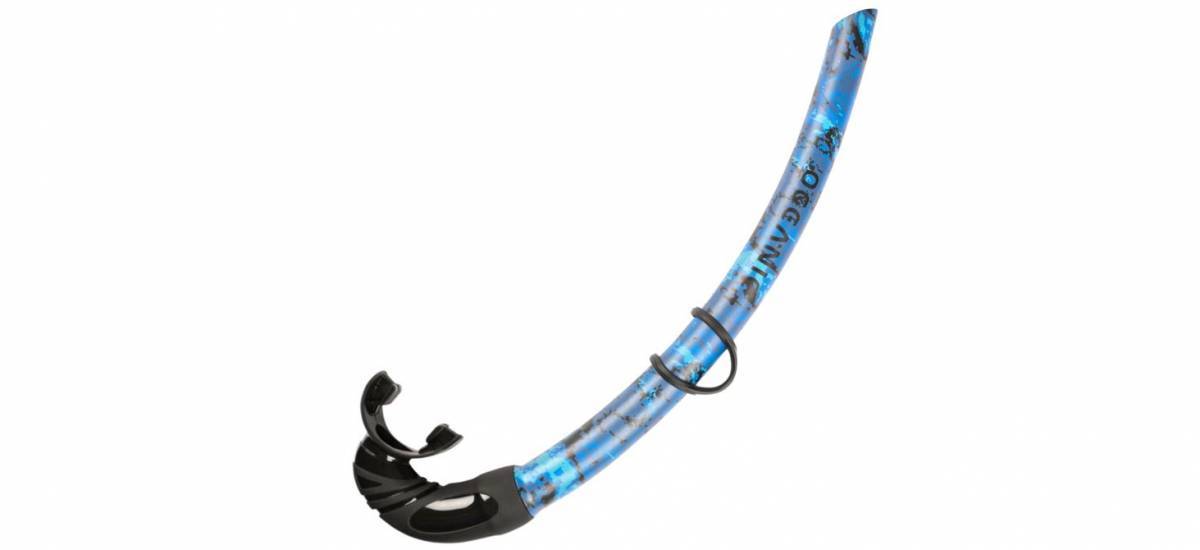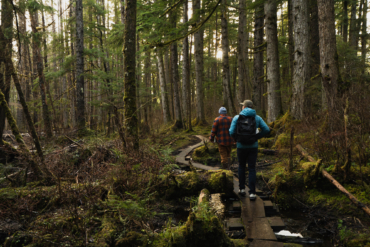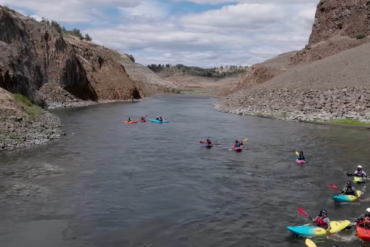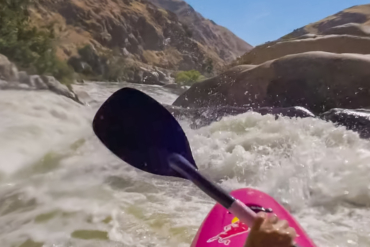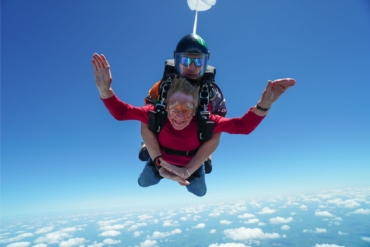Freediving straddles the line between snorkeling and scuba diving, getting you closer to sea life without the noise and weight of the extra gear. Plus, it requires a minimal quiver of equipment to get started.
Snorkeling is a great way to see sea life and really soak in the underwater world. However, if you’ve ever felt stuck on the surface of the water and longed to chase the allure of an animal or structure in the depths, freediving may be the next step.
Freediving is pretty self-explanatory; it involves deep breaths held for a long time to dive deep to explore or retrieve food. Beyond the breathing, streamlined movements help you keep only essential muscles engaged, which saves on oxygen use.
Specialized gear, especially long-blade swim fins, can help divers move more efficiently underwater. Here are some key tips on how to get started, so you can plan and know if freediving is right for you.
Shop the Oceanic Predator Kit
CAUTION: Freediving is an inherently dangerous activity. Proper training and education are necessary before attempting serious freedives, as it carries the risk of physical trauma and/or drowning.
What Is Freediving?
Freediving is an age-old practice to forage for food in deeper waters. It hits a sweet spot between snorkeling and scuba diving that unlocks more underwater adventure and experiences.
As an introduction to freediving, we’ll focus on recreational freediving, without going too in-depth. There are several styles of freediving, including the practice of wearing weighted belts to assist with submerging.
For this, a rope and extra-long fins are then used to return to the surface without using as much energy and oxygen. Freediving is also a precursor to spearfishing.
Learning the ropes used to be more grassroots. Knowledge was passed on from others with more experience. Luckily, for everyone’s safety, there are plenty of classes available that make the basic knowledge accessible and digestible from the start.
Freedom & Stealth
Why freedive? With some basic breathing skills and a safety course, you’ll unlock the ability to approach underwater creatures quietly. The lack of bubbles (as in scuba diving) allows you to swim more closely with the wildlife and is one reason photographers and others choose to ditch their gear.
Freediving is also more approachable and affordable than scuba diving. The safety course isn’t as involved, and there’s far less equipment. That also makes it a more travel-friendly way to explore a wide range of waters.
Most courses are designed to lead people into being ready for deeper waters, said freedive instructor Chad Bagwell. He and other certified instructors cover safety, equipment, physiology, and techniques in their classes.
“You sit down in a class, you learn some things,” he explained. “You do some exercises out of the water and then you move to the pool and do those exercises. From there, you progress to actually freediving down to different depths under highly supervised circumstances.”

Below is a quick overview of what lies ahead and to better understand the considerations involved with improving your freediving skills and safety. A freediving course will help you understand the physics of pressure, how it changes at different depths, and the hydrodynamics at play while swimming there.
There are other considerations like marine life, tides, as well as weather and conditions on the surface.
Breathe Deep
If you ever spent a summer picking up pennies off the bottom of a pool, you likely improved your ability to hold your breath for longer and dive deeper. That’s because it takes practice and training.
Freediving begins with breathing, and there are plenty of introductions online to help you build up how long you can hold your breath. From there, it’s about conserving movements that eat up energy and air.
Deep breathing and holding your breath with the intention to freedive is called dry training. Wet training is taking this practice in a pool or open water. While you’ve surely held your breath underwater at a swimming pool, this is not the same. We do not recommend you move to water-based techniques until you’ve taken a course.
“The main danger in freediving is blackout and loss of breath, what we call hypoxic events. If you don’t know what to do right next to you, you’re going to sink, and probably not come back,” Bagwell said.
“Second to that, it’s about a good team, who’s running the boat. Being hit by the boat’s propeller or being left during a group dive are real dangers when an inexperienced (or distracted) captain is at the helm.”
Seconds at a Time
Bagwell says there’s a huge misconception that there’s not some technique that will unlock your inner Aquaman. Instead, there are a lot of little things that add up over time, with training and experience.
“There’s totally a technique to it. It’s helpful but it’s also your equipment, how you’re kicking, your body positioning, and state of mind, and it’s all about grabbing a few more seconds with each,” Bagwell said.
The most critical gear is actually your body. The risks of diving incorrectly include trauma to the ears and sinuses to the obvious — passing out and drowning. And deeper dives, for more advanced divers, introduce pressure to the equation.
Holding your breath in place, usually just below the surface of the water, is called static apnea. From there, active apnea introduces swimming movements that eat up oxygen faster.
Buddy Up
You should only freedive with a partner who is also trained. Beyond potentially saving you underwater, this person can help devise a dive plan and weigh in on decisions. Buddies can also monitor you — and a stopwatch — during wet training through regular communication (via taps) during long breaths.
On recreational dives, you and a buddy should take turns monitoring one another. That’s the “one up, one down” rule, and really, both of you should be rested and recovered between dives before one descends again.
Advanced divers may learn to dive to depths where your neutral buoyancy is not enough to return you to the surface. At this depth, gravity kicks in and it is easier to descend. Experienced divers, even freedivers, will engage in freefalling, where they stay motionless (yet alert) as they float down to preserve oxygen.
Freedive Essential Gear
Oceanic makes a freediving kit intended for beginners. The Predator line includes a mask, snorkel, and fins, each styled with a blue camo print to stand out from other dive gear lines.
Predator Mask
This free dive mask has a low-volume design to help see more of your surroundings. The tempered and tinted lenses will conceal your eyes from prey in case you are trying to live up to its Predator name. The brand’s Soft Squeeze buckle technology mixes comfort and ease of use with soundless functionality.
Predator Free Dive Fin
The Predator Fin uses a full-foot design, comes in five sizes, and has a heel tab to aid in getting them on and off. The long, ribbed blade and side rails are designed to harness the power of your kicks while adding stability to your movements.
Predator Snorkel
If it ain’t broke, don’t fix it. The Predator Snorkel is a simple and streamlined J-shaped snorkel design with no valves or detachable parts.
Predator Freedive Bag
This addition to the Oceanic Bag Collection is made to accommodate the long Predator Freedive Fins. And it has a pocket divider for the line’s mask and snorkel, too. It can be carried by the top handle or a shoulder strap.
Dive In
Whether you’re an experienced scuba diver looking to ditch the gear and swim more freely underwater or a snorkeler who wants to explore greater depths, freediving offers a different experience.
Altogether, a freediving kit is an affordable entry point into a new (but classic) method of exploring. Training can start with breathing, a safety course, and swimming pool training before taking the plunge in wilder waters.
Shop the Oceanic Predator Kit
This article is sponsored by Oceanic. Find out more about its Predator freedive kit.



